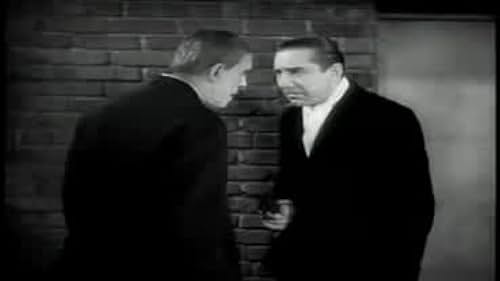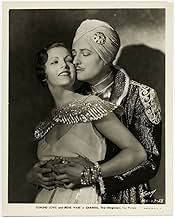Irene Ware(1910-1993)
- Actress
One of the many "also rans" or "might-have-beens" in 1930's Hollywood
was a blonde beauty queen of Swedish/Austrian ancestry, named Irene
Ware. She was actually born Irene Ahlberg in Pelham, New York and first
plied her trade as a stenographer before other endeavours piqued her
interest. Aged eighteen, she ran second in an International Beauty
Contest (which went by the misnomer of
'Miss Universe') in Galveston, Texas. The $1000 prize money would have gone a long way to enabling her start in showbiz. She duly made it that very year, joining the ensemble of Earl Carroll's
Sketchbook on Broadway. Irene seemed to have possessed just the right
blend of talent, charisma and sex appeal, since she managed to replace
Lillian Roth for a top-billed spot in the
1930 edition of the "Vanities". Before the show had even run its
course, Irene Ahlberg signed a two-year contract with Fox and changed
her surname to Ware.
In only her second Hollywood outing, she was assigned the role of the female lead in Chandu the Magician (1932), opposite co-stars Edmund Lowe (as Chandu) and Bela Lugosi (as the evil Roxor). The picture itself was critically derided as naive and implausible, but most reviewers found the newcomer's performance refreshingly unaffected (this was by no means commonplace: the practice of overacting and histrionics persisted for years after the advent of sound, a holdover from previous decades). The New York Times critic praised Irene as "a charming juvenile". Ultimately, that meant little. For her next ten outings with Fox, she was destined for ornamental second leads in bad pictures or barely glimpsed in uncredited bits in average ones. When her contract expired in 1934, she signed with Universal but fared no better. Her single role of note saw her paired with Lugosi once again, this time as a dancer obsessed over by a maniacal Poe-fixated surgeon in The Raven (1935). Reviews called this "the season's worst horror film", and a tepid affair it definitely was. Irene's performance may have been one of few redeeming qualities, her Jean Thatcher being rather less annoyingly helpless and fragile than the typical heroines of the genre. "The Raven" spelled the end of her career. In its aftermath came B-movies with Poverty Row outfits like Monogram and Invincible. In 1940, Irene Ware called it quits and faded into obscurity, to be seen in pictures 'nevermore'.
In only her second Hollywood outing, she was assigned the role of the female lead in Chandu the Magician (1932), opposite co-stars Edmund Lowe (as Chandu) and Bela Lugosi (as the evil Roxor). The picture itself was critically derided as naive and implausible, but most reviewers found the newcomer's performance refreshingly unaffected (this was by no means commonplace: the practice of overacting and histrionics persisted for years after the advent of sound, a holdover from previous decades). The New York Times critic praised Irene as "a charming juvenile". Ultimately, that meant little. For her next ten outings with Fox, she was destined for ornamental second leads in bad pictures or barely glimpsed in uncredited bits in average ones. When her contract expired in 1934, she signed with Universal but fared no better. Her single role of note saw her paired with Lugosi once again, this time as a dancer obsessed over by a maniacal Poe-fixated surgeon in The Raven (1935). Reviews called this "the season's worst horror film", and a tepid affair it definitely was. Irene's performance may have been one of few redeeming qualities, her Jean Thatcher being rather less annoyingly helpless and fragile than the typical heroines of the genre. "The Raven" spelled the end of her career. In its aftermath came B-movies with Poverty Row outfits like Monogram and Invincible. In 1940, Irene Ware called it quits and faded into obscurity, to be seen in pictures 'nevermore'.
























